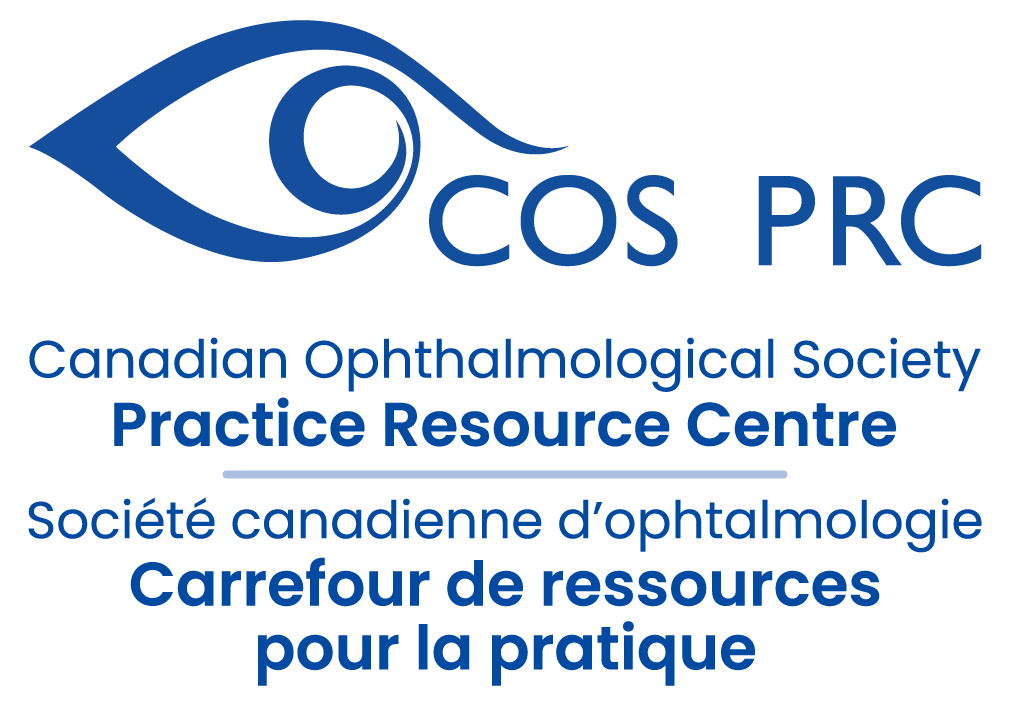Joint Position Statement on the Use of Patented Microcurrent Technology for Dry AMD
The Canadian Ophthalmological Society (COS) and Canadian Retina Society (CRS) advise caution when considering a new microcurrent treatment for dry age-related macular degeneration (AMD). While early studies suggest it may help, there isn’t enough long-term evidence to confirm its safety or effectiveness. Retinal specialists, given their extensive expertise in managing age-related macular degeneration, recommend that patients and doctors discuss the treatment carefully and understand its limitations before deciding. The joint position statement is available to read below:
Diabetes Awareness Month
November is Diabetes Awareness Month, a time to highlight the critical role ophthalmologists play in managing diabetic eye disease. To support your practice, the Practice Resource Centre has compiled a curated list of insightful journal articles, clinical guidelines, and patient resources focused on diabetic retinopathy and related complications. Explore these valuable tools to stay informed and enhance patient care.
For Guidelines:
Diabetes Canada – Diabetic Retinopathy Guidelines
American Academy of Ophthalmology – Guidelines on Diabetic Eye Care
For Articles:
Retinal Physician – The Evolution of Clinical Trial Endpoints for Diabetic Retinopathy
JMIR Diabetes – Implementation of Artificial Intelligence–Based Diabetic Retinopathy Screening in a Tertiary Care Hospital in Quebec: Prospective Validation Study
Canadian Journal of Ophthalmology – Spectral-domain OCT characteristics of intraretinal hyper-reflective foci associated with age-related macular degeneration and diabetic retinopathy
Canadian Journal of Ophthalmology – Long-term visual outcomes and fluid compartment changes in limited-early versus early response to anti-VEGF treatment for diabetic macular edema
Canadian Journal of Ophthalmology – https://www.canadianjournalofophthalmology.ca/article/S0008-4182(24)00173-X/abstract
For Consensus Statements:
Ophthalmology and Therapy – Diabetic Disease of the Eye in Canada: Consensus Statements from a Retina Specialist Working Group
For Correspondence:
Canadian Journal of Ophthalmology – Acute bilateral diabetic papillopathy in a child
Protected: MOC Course Testing Page
EyeNovation Webinar: The Impact of Corneal Spherical Aberration and Pupil Dynamics on Premium IOLs – Recording
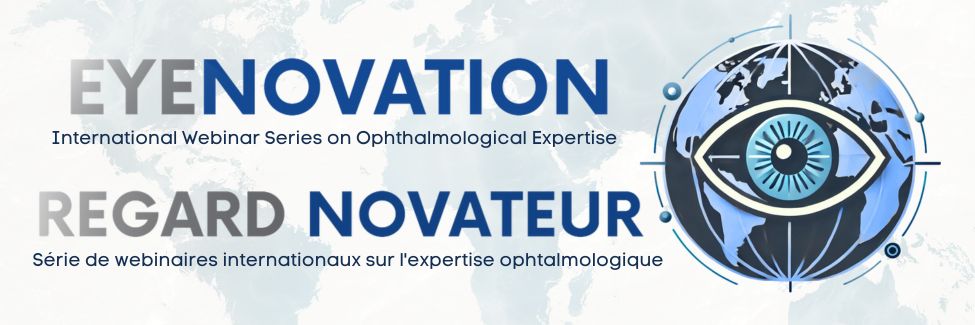
We are excited to announce the next webinar in our “EyeNovation: International Webinar Series for Ophthalmic Expertise” series, “Impact of corneal spherical aberration and pupil dynamics on premium IOLs’ optical behavior,” presented by the esteemed Professor Damien Gatinel from Hôpital Bichat-Claude Bernard, Université Paris Cité.

Professor Gatinel, a Hospital Practitioner currently on secondment at Hôpital Bichat-Claude Bernard, Université Paris Cité, has an impressive background. He has been leading the Anterior Segment and Refractive Surgery Department at the Rothschild Foundation Hospital since 2009 and serves as an Associate Professor at the International Abulcassis University of Health Sciences in Rabat, Morocco. With a PhD in applied mathematics, Professor Gatinel has pioneered a new classification of ocular optical aberrations and issued several patents, including the first design of a diffractive trifocal lens. His contributions have earned him over 25 international awards and recognition as a Knight of the Order of the Crown by the Kingdom of Belgium.
In this webinar, Professor Gatinel will:
- Analyze how corneal spherical aberration influences the optical behavior of premium intraocular lenses (IOLs), with a focus on their interaction with different corneal profiles.
- Examine how variations in pupil size affect the modulation transfer function (MTF) and other optical parameters of premium IOLs under simulated conditions.
- Apply insights from measurements and simulations to optimize the selection of premium IOLs.
If you missed this incredible opportunity to learn from a leading expert in the field and advance your ophthalmic expertise, you can review the recording below:
Stay tuned for future webinars in the EyeNovation series, as we continue to bring you the latest advancements and expert perspectives in ophthalmology. Together, we can improve patient care and push the boundaries of what is possible in this dynamic field.
ANZGS Congress 2025
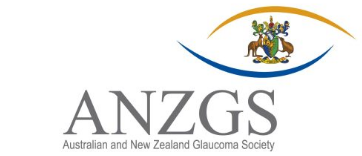
The Australian and New Zealand Glaucoma Society will be hosting their 2025 ANZGS Congress, which will be held in Perth from 14 – 16 February 2025.
The congress will include the highly popular and somewhat unpredictable interactive panel and case presentations, the ACB Molteno Off-Piste Lecture, and numerous keynote presentations from the glaucoma field, along with ample opportunities for submitted papers. Their keynote presenters include:
- Professor Norbert Pfeiffer (Lowe Lecture)
- Professor Steven Tingay (ACB Molteno Lecture)
- Professor Keith Martin (Gillies Lecture)
Registration is open now! The deadline to register for this event is February 7th, 2025. Virtual and in-person registration is available. For more details on registering, click HERE.
EyeNovation Webinar: The Light Adjustable Lens – Recording

We are thrilled to announce the next webinar in our “EyeNovation: International Webinar Series for Ophthalmic Expertise” series, “The Light Adjustable Lens: Impressions after 500 and my 2 eyes,” presented by esteemed ophthalmologist Dr. Samir Melki from Harvard Medical School. This webinar took place on October 30th, from 7:00 PM – 8:00 PM ET.

Dr. Melki, an associate professor of ophthalmology at Harvard Medical School, has an impressive background, including completing a fellowship in Cornea and Refractive Surgery at the Massachusetts Eye and Ear Infirmary, an MD PhD from Vanderbilt University, and an Ophthalmology residency at Georgetown University. He is the founder of Boston Vision, an academically-oriented practice, and has published 4 textbooks and 57 articles in respected peer-reviewed scientific journals.
In this webinar, Dr. Melki shared his LAL experience with the first 500 eyes, discussing the technology, process, and outcomes. Attendees will gain insights into:
- The process of the LAL;
- Comparison of the visual outcomes of the LAL and other IOLs;
- Patient satisfaction after LAL implantation.
Dr. Melki also discussed the success rate of monovision after LAL, the percentage of patients requesting a change in refractive aim, and his personal experience with LAL and LAL plus from a surgeon’s perspective.
You can watch the recording below:
Missed this webinar? Stay tuned for future webinars in the EyeNovation series, as we continue to bring you the latest advancements and expert perspectives in ophthalmology. Together, we can improve patient care and push the boundaries of what is possible in this dynamic field.
Vision Health Conference 2024
Report Card: The Post-Pandemic State of Vision Health in Canada
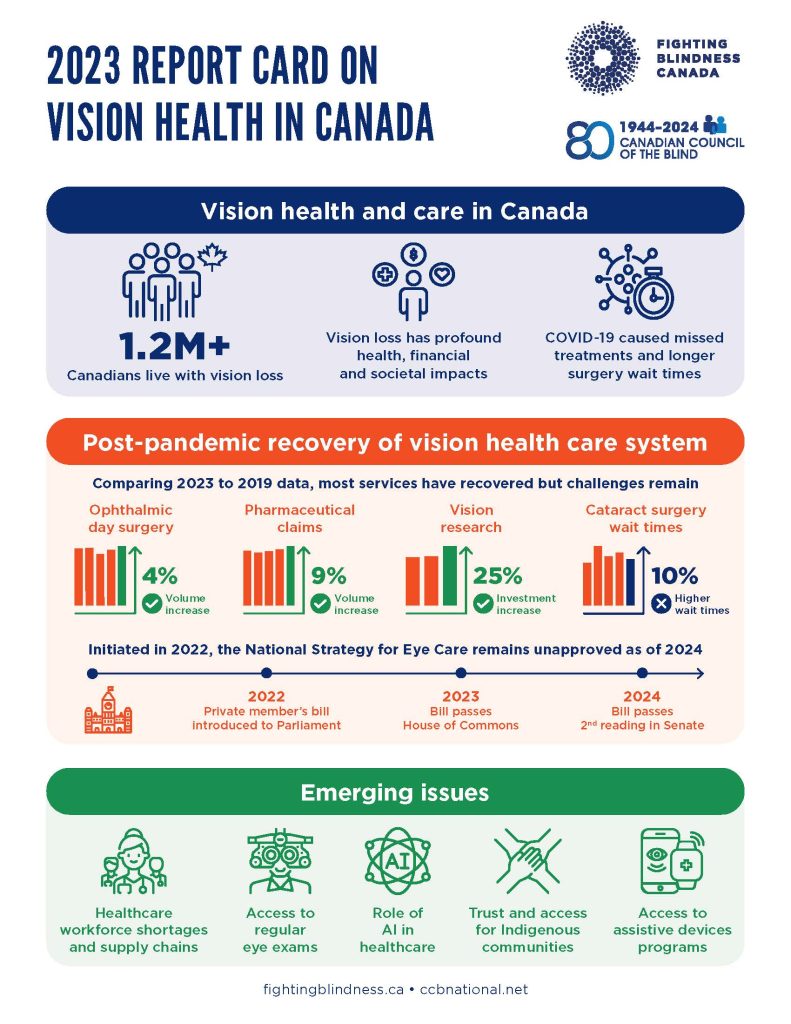
Date: Wednesday, October 30, 2024
Time: 10 am – 2 pm
Location: Toronto Reference Library
789 Yonge Street, Toronto, Ontario, M4W 2G8
Bram & Bluma Appel Salon (2nd floor)
This conference will present results from the newly-released Report Card Part 2, undertaken by the Canadian Council of the Blind (CCB) and Fighting Blindness Canada (FBC), which is a follow-up to the Report Card Part 1, released in October 2022.
The report provides an update on the current state of vision health in Canada and what we can anticipate as we move forward from the post-pandemic era. The report offers insights into the key issues affecting vision health and the community of people living with vision loss.
This is a hybrid event, meaning the same content will be offered at the same time.
For in-person registration, click HERE.
For online registration, click HERE.
You can view the 2023 Report Card below!
27th EVER Congress

Date: November 3-5, 2024
Location: Valencia, Spain – Palacio de Congresos de València
EVER is the leading ophthalmological research association in Europe which covers all areas of ophthalmology and the visual sciences. One of the main activities of EVER is the organizing of a high quality research meeting every year at a location chosen for its access and congress facilities.
The 27th EVER congress will provide the perfect environment to promote the best research in vision, retina and eye, bringing together clinical, translational and basic science in a very beautiful, welcoming and dynamic city.
For more information on this innovative, scientific programming, click HERE.
The 27th EVER CONGRESS, Valencia, Spain 03/11/2024 – 05/11/2024 has been accredited by the European Accreditation Council for Continuing Medical Education (EACCME®) with 17 European CME credits (ECMEC®s). Each medical specialist should claim only those hours of credit that he/she actually spent in the educational activity (6 credits on 3/11, 6 credits on 4/11, 5 credits on 5/11). “Through an agreement between the Union Européenne des Médecins Spécialistes and the American Medical Association, physicians may convert EACCME® credits to an equivalent number of AMA PRA Category 1 CreditsTM. Information on the process to convert EACCME® credit to AMA credit can be found at www.ama-assn.org. Live educational activities, occurring outside of Canada, recognised by the UEMS-EACCME® for ECMEC®s are deemed to be Accredited Group Learning Activities (Section 1) as defined by the Maintenance of Certification Program of the Royal College of Physicians and Surgeons of Canada.
Fuchs IX Symposium
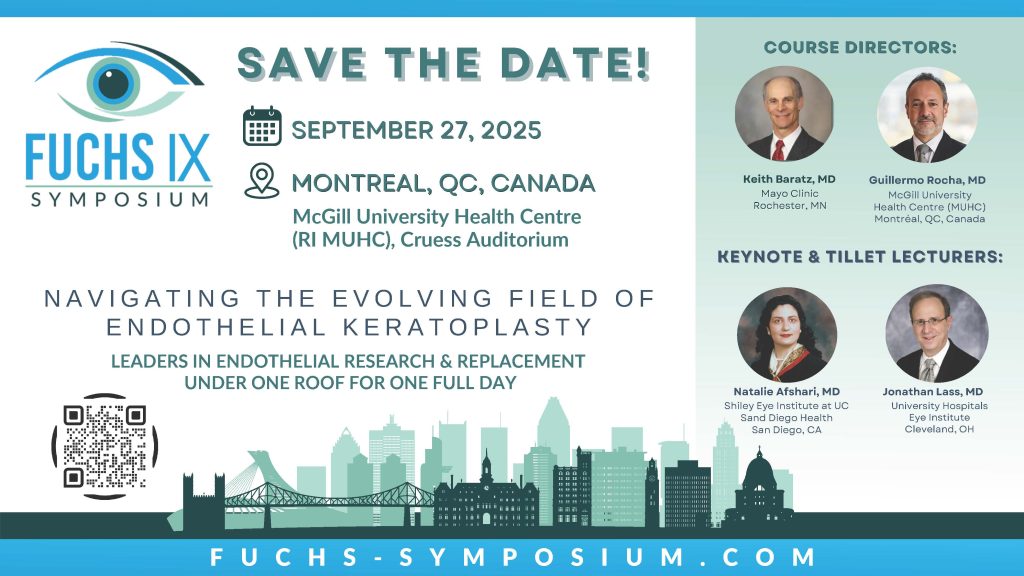
For the past decade, the biennial Fuchs Symposium has brought together the world’s leaders in endothelial research and treatment under one roof to share the latest advancements in this exciting field. The Fuchs IX Symposium will take place at the McGill University Health Centre in Montréal, Canada. The course directors have gathered an incredible faculty that you won’t want to miss. This symposium will take place on September 27th, 2025. Be sure to save the date, registration will be open soon!
